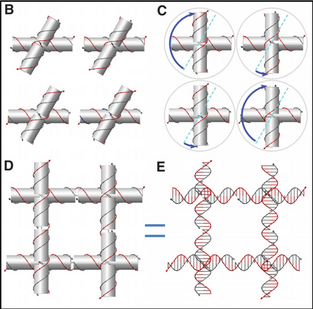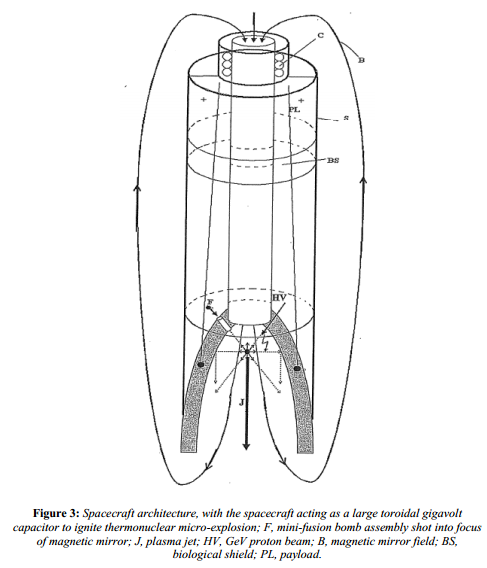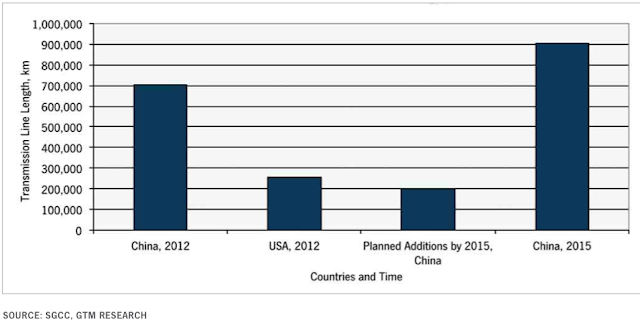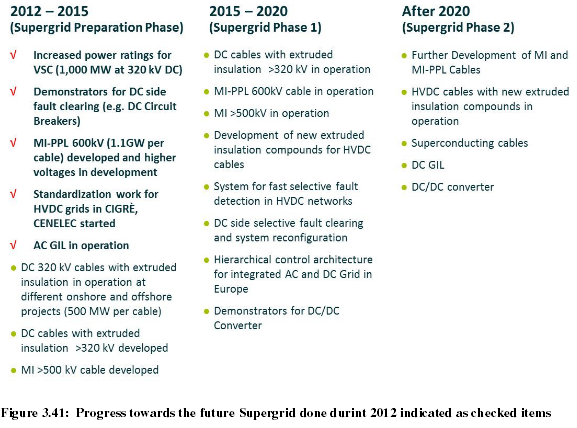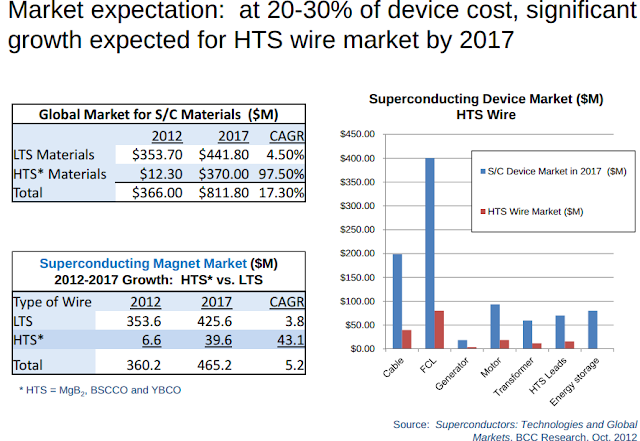Click here to read this mailing online.
Here are the latest updates for jorgeus.george@gmail.com
 "Next Big Future" - 10 new articles
"Next Big Future" - 10 new articles
- New Nuclear Reactor Completions Expected Worldwide from 2013 to 2017
- The Age of Reusable Rockets Could Begin in the middle of 2014 with a Spacex Propulsive Landing
- DNA made into Complex 2D and 3D DNA nanostructures made from DNA wireframe meshes using new adaptable junctions
- Hypersonic Electric Acceleration for Launching to Space and for accelerating commercial hypersonic planes that is cheaper than maglev and more efficient
- Thermonuclear Micro-Bomb Propulsion for Fast Interplanetary Missions by Friedwardt Winterberg
- China Spending $269 billion on High Voltage Direct Current Grid Construction from 2011 to 2015 as part of a massive Smart Grid and Home Automation Plan
- European High Voltage Direct Current Supergrid Roadmap
- DARPA developing sensor tattoos for monitoring vital signs
- Stories of Hunt Brother Billionaire Again and Madonna
- By 2018 High Temperature Superconductors will have similar market size to low temperature superconductors
- More Recent Articles
- Search Next Big Future
- Prior Mailing Archive
New Nuclear Reactor Completions Expected Worldwide from 2013 to 2017The World Nuclear association has an updated list of the new nuclear reactors that are expected from 2013 to 2017 There are in the range of 15 nuclear reactors expected each year.
Commercial Operation* REACTOR MWe (net) 2013 Iran, AEOI Bushehr 1* 950 2013 India, NPCIL Kudankulam 1 950 2013 India, NPCIL Kudankulam 2 950 2013 China, CGNPC Hongyanhe 1* 1080 (was grid connected Feb, 2013) 2013 China, CGNPC Ningde 1* 1080 (was grid connected Dec, 2012) 2013 Korea, KHNP Shin Wolsong 2 1000 2013 Korea, KHNP Shin-Kori 3 1350 2013 Russia Leningrad II-1 1070 2013 Argentina, CNEA Atucha 2 692 2013 China, CGNPC Ningde 2 1080 2013 China, CGNPC Yangjiang 1 1080 2013 China, CGNPC Taishan 1 1700 2013 China, CNNC Fangjiashan 1 1080 2013 China, CNNC Fuqing 1 1080 2013 China, CGNPC Hongyanhe 2 1080 Read more » The Age of Reusable Rockets Could Begin in the middle of 2014 with a Spacex Propulsive LandingAt a joint press conference with NASA yesterday, SpaceX CEO Elon Musk said the company will try a water landing of its Falcon 9 first stage later year. The landing will be the start of a series of flight tests that could culminate with an attempted propulsive landing of a first stage back at its launch site in the middle of 2014, Musk said.
During the initial test, the first stage will continue on a ballistic arc and execute a velocity reduction burn to cushion its re-entry into the atmosphere, the SpaceX chief said. Just before splashdown, the rocket will light up its engines again.
Musk said he expected to lose first stages during the initial recovery attempts. The company is looking to gain the experience and data needed to bring a first stage back to the launch site next year for a propulsive landing using retractable legs. He said that attempt could occur in mid-2014. This confirmed the rumor (from March 22, 2013) of an attempt to recover a first stage from a water landing. A successful propulsive landing would enable reusable rockets which could lower the cost of launching to space by 100 times. 
Read more » DNA made into Complex 2D and 3D DNA nanostructures made from DNA wireframe meshes using new adaptable junctionsUniversity of Arizona researcher Hao Yan has made new 2-D and 3-D objects that look like wire-frame art of spheres as well as molecular tweezers, scissors, a screw, hand fan, and even a spider web.
The twist in their 'bottom up,' molecular Lego design strategy focuses on a DNA structure called a Holliday junction.
In nature, this cross-shaped, double-stacked DNA structure is like the 4-way traffic stop of genetics – where 2 separate DNA helices temporality meet to exchange genetic information. The Holliday junction is the crossroads responsible for the diversity of life on Earth, and ensures that children are given a unique shuffling of traits from a mother and father's DNA. In nature, the Holliday junction twists the double-stacked strands of DNA at an angle of about 60-degrees, which is perfect for swapping genes but sometimes frustrating for DNA nanotechnology scientists, because it limits the design rules of their structures. "In principal, you can use the scaffold to connect multiple layers horizontally," [which many research teams have utilized since the development of DNA origami by Cal Tech's Paul Rothemund in 2006]. However, when you go in the vertical direction, the polarity of DNA prevents you from making multiple layers," said Yan. "What we needed to do is rotate the angle and force it to connect." The fundamental unit in Hao Yan's new nanostructures rely on modifying a 4-arm DNA junction. The relaxed DNA geometry found in a 4-arm junction (B) can be rotated 150 degrees clockwise or 30 degrees counterclockwise (C) to form the right angles needed to make a DNA Gridiron (D and E). Photo by: Biodesign Institute Science - DNA Gridiron Nanostructures Based on Four-Arm Junctions Read more » Hypersonic Electric Acceleration for Launching to Space and for accelerating commercial hypersonic planes that is cheaper than maglev and more efficientAlexander Bolonkin proposes a hypersonic ground based electric engine that is several times more efficient than railguns and more economical than maglev rail.
The main idea of the offered ground hypersonic electric engine is segmentation of the acceleration track on small special closed-loop sections (12.5 – 100 meters) and a system of special switches which allow return of the magnetic energy to the system transferring it to apparatus movement. This increases the efficiency of hypersonic engine up 90% (instead of 20-40% for a railgun). It avoids the burning of rails when using the engine for long periods of time. The same idea may be used in a conventional Rail Gun. The feasibility and practicality of this invention was designed for the purpose of using it as a space launcher for astronauts and space load, as method for hypersonic long distance aviation and as method for supersonic passenger ground rail transportation. The offered system will be significantly cheaper than the currently used MagLev (Magnetic Levitation) systems, because the vehicle employs conventional wings for levitation and the hypersonic engine is very simple. The offered system may be also used for mass launch of projectiles as a weapon. The suggested launcher is * very simple * uses conventional iron rails * does not generate high heating * can be produced with present technology. * A large conventional power plant is enough for launching over ten tons into orbit. Read more » Thermonuclear Micro-Bomb Propulsion for Fast Interplanetary Missions by Friedwardt WinterbergTo reduce the radiation hazard for manned missions to Mars and beyond, a high specific impulse-high thrust system is needed, with a nuclear bomb propulsion system the preferred candidate. The propulsion with small fission bombs is excluded because the critical mass requirement leads to extravagant small fission burn up rates. This leaves open the propulsion with non-fission ignited thermonuclear micro-explosions, with a compact fusion micro-explosion igniter (driver), and no large radiator. It should not depend on the rare He3 isotope, and only require a small amount of tritium. This excludes lasers for ignition. With multi-mega-amperegigavolt proton beams and a small amount of tritium, cylindrical deuterium targets can be ignited. The proton beams are generated by discharging the entire spacecraft as a magnetically insulated gigavolt capacitor. To avoid a large radiator, needed to remove the heat from the absorption of the fast neutrons in the spacecraft, the micro-explosion is surrounded by a thick layer of liquid hydrogen, stopping the neutrons and heating the hydrogen to a temperature of ~ 100,000 Kelvin, which as a fully ionized plasma can be repelled from the spacecraft by a magnetic mirror.
This is a new nuclear fusion microbomb propulsion design for a spaceship to Mars that would travel at 200,000 miles per hour. This would enable a travel time of about 2 weeks. Winterberg is well-respected for his work in the fields of nuclear fusion and plasma physics, and Edward Teller has been quoted as saying that he had "perhaps not received the attention he deserves" for his work on fusion. His thermonuclear microexplosion ignition concept was adopted by the British Interplanetary Society for their Project Daedalus Starship Study. His work was the theoretical basis of the global positioning system. Read more » China Spending $269 billion on High Voltage Direct Current Grid Construction from 2011 to 2015 as part of a massive Smart Grid and Home Automation PlanChina is by far the biggest consumer of HVDC (High Voltage Direct Current) technology. The government has said it wants to spend $269 billion through 2015 on building about 200,000 kilometers of new 330-kilovolts-and-up transmission lines -- almost the equivalent of rebuilding the United States' 257,500-kilometer transmission network from scratch. Of that, State Grid Corp. of China plans to spend a staggering $80 billion on 40,000 kilometer of ultra-high voltage (UHV) DC lines from 2011 to 2015.
China is adding so much new transmission capacity and so many power lines that it could build three quarters the length of a new American transmission grid in just five years. When the dust settles, there will be over 200,000 kilometers of new 330-kilovolts-and-up transmission lines built, for a total of 900,000 kilometers of transmission lines, compared to 257,500 kilometers of transmission lines presently in the U.S. China's smart grid development includes six key areas: power generation, transmission, transformation, distribution, consumption, and dispatching. The smart grid covers all voltage levels to achieve the optimum power flow, information flow, and business flow, along with a high degree of integration. China is currently in the second stage of its smart grid deployment, according to the State Grid Corporation of China. Lasting from 2011-2015, this is the full construction phase. Pike Research forecasts that cumulative smart grid revenue in China will reach $127 billion by 2020. China represents 70% of the Asian smart grid market, and will invest close to US$250 billion into its grid over the next five years. There are major plans in motion in the areas of transmission, distribution automation, smart meters, electric vehicles (EV), and EV charging technologies, and over 263 smart grid pilot projects already underway Read more » European High Voltage Direct Current Supergrid RoadmapThere is a High Voltage DC supergrid technology roadmap. (107 pages. Mar 2013.) Direct Current becomes more cost effective at longer distances versus alternating current. At similar voltage level, a DC line can transmit more than double the power at about half the losses compared to an AC line for a 1000 kilometer line.
Phases for Developing Supergrid Today – 2015 The period from today to 2015 is determined by renewable energy starting to replace older coal fired power plants as well as nuclear power, the latter especially in Germany. Europe's first large scale near shore and far shore wind parks are commissioned, typically in the power range of 500 to 1,000 MW. AC transmission is used as far as possible to connect the wind parks to the onshore grid. Projects that are more than 100 km away from their onshore connection point are connected by radial VSC based HVDC point-to-point links. To transmit the energy generated offshore to the load centres, the existing transmission system reaches its capacity limits and planning is underway for system strengthening and expansion. Studies such as the Offshore Grid Study and the Climate Foundation 2050 Road Map alongside initiatives such as North Seas Countries Offshore Grid (NSCOGI) and ENTSO-E’s 2050 Electricity Highways Working Group all point to the need for higher levels of network integration. Read more » DARPA developing sensor tattoos for monitoring vital signsDARPA is developing skin-adherent sensors are to monitor troops vital signs possibly in real time. Military scientists believe that using the device — preferably a tattoo — to track heart-rate, temperature or bio-electric response during various training situations will help them crack the code of combat fatigue. The solicitation, which opened last month, hopes new technologies can transcend the current paradigm of patient monitoring of needles, gels and electrodes. And advanced materials make it possible to integrate everything from the sensors to the transmitter into thumb-sized membranes that can stick to skin — like temporary tattoos.
Darpa is hoping that whichever company wins the research contract will be able to use a relatively new technology known as epidermal electronic systems (EES) to make sensors that are both unobtrusive and durable enough for modern combat training. Using state-of-the-art, highly flexible materials, researchers can coil sensors, electronics, and transmitters into serpentine shapes that form a stretchable net. “This innovative design contains all of the necessary components in an ultrathin layer about the thickness of a human hair,” writes Zhenqiang Ma, an electrical engineer at the University of Wisconsin, in a review of the technology. Read more » Stories of Hunt Brother Billionaire Again and MadonnaThese are a couple of off topic stories of wealth.
1. H.L. Hunt was a billionaire Texas oil tycoon who was the inspiration for the character of JR Ewing on the TV show Dallas. Two of his 14 children were William Herbert and Nelson Hunt. They were the billionaire Hunt brothers who tried to corner the world silver market back in the 1970s and 1980. Nelson Bunker Hunt and William Herbert Hunt, the sons of Texas oil billionaire Haroldson Lafayette Hunt, Jr., had for some time been attempting to corner the market in silver. In 1979, the price for silver jumped from $6 per troy ounce to a record high of $48.70 per troy ounce, which represents an increase of 712%. The brothers were estimated to hold one third of the entire world supply of silver (other than that held by governments). But on January 7, 1980, in response to the Hunts' accumulation, the exchange rules regarding leverage were changed, when COMEX adopted "Silver Rule 7" placing heavy restrictions on the purchase of commodities on margin. The Hunt brothers had borrowed heavily to finance their purchases, and as the price began to fall again, dropping over 50% in just four days, they were unable to meet their obligations, causing panic in the markets. The Hunt brothers went bankrupt. William Herbert Hunt is once again a billionaire, this time with oil. In October, he sold 43 percent of the North Dakota petroleum assets owned by his closely held Petro-Hunt LLC for $1.45 billion to Houston-based Halcon Resources The cash and stock deal made Hunt Halcon’s largest shareholder and boosted his net worth to $4.2 billion. Read more » By 2018 High Temperature Superconductors will have similar market size to low temperature superconductorsSuperpower Inc plan to increase critical current by 5 times and make other improvements to high temperature superconductors.
Read more » More Recent Articles
|

